Now Is Not the Time to Turn Our Backs on Seniors

“Now is not the time to turn our backs on seniors by cutting Social Security and Medicare!” declared Congressman Raja Krishnamoorthi (D-IL), kicking off a town hall in his home district with National Committee President and CEO Max Richtman on August 29th. Held in Des Plaines, Illinois before an audience of constituents, the event was entitled, “Keeping Our Promises to Seniors.”
During the hour-long town hall, Richtman and Rep. Krishnamoorthi pledged to continue working together to expand and strengthen Social Security and Medicare — and fight any attempts to cut or privatize them. “We have to protect Social Security and Medicare. That’s our promise… and in America, we keep our promises,” said the Congressman.
Richtman and Krishnamoorthi lauded the Democrats’ recently enacted Inflation Reduction Act, which empowers Medicare to negotiate prescription drug prices and caps beneficiaries’ out-of-pocket costs for medications, among other measures to alleviate seniors’ costs at the pharmacy counter.
“Medicare is going to be able to negotiate the prices of some of the most expensive drugs. And the $2,000 yearly cap in Medicare Part D is going to help a lot of seniors who have been spending a fortune on very costly treatments. We worked on this for a long time and finally got it through the Congress.” – Max Richtman at Rep. Krishnamoorthi’s town hall, 8/29/22
Richtman praised Rep. Krishnamoorthi for “taking on Big Pharma” and contributing to this landmark legislation as a member of the House Committee on Oversight and Reform. “This new law may be a bitter pill for the drug industry. But it will provide relief to millions of seniors,” Richtman said.
Prescription drugs were not the only things on constituents’ minds at the town hall. Participants asked questions about the controversial Medicare Advantage (MA) program — the privately-run alternative to traditional Medicare. MA plans, which are run by big insurance companies, are undergoing increased (some would say, overdue) scrutiny for questionable practices, including overbilling the Medicare program and denying reasonable care to patients.
“The HHS Inspector General’s report that showed that many MA beneficiaries were denied coverage even though it should have been approved under Medicare rules. Why? Because MA is a business. Insurance companies want to make money. Their priority is profit. If they can make more money by denying services, they’ll do that.” – Max Richtman, 8/29/22
Richtman told the town hall audience that Senator Ron Wyden, Chairman of the Senate Finance Committee, has launched an inquiry into questionable Medicare Advantage practices. Sen. Wyden recently sent letters to 15 state insurance commissioners and state health insurance assistance programs requesting data related to “deceptive marketing practices.” The Centers for Medicare and Medicaid Services (CMS) says it received more than twice the number of complaints from seniors regarding Medicare Advantage plans in 2021 than it did in 2020.
“I have heard alarming reports that MA health plans… and their contractors are engaging in aggressive sales practices that take advantage of vulnerable seniors and people with disabilities.” – Senator Ron Wyden’s letter to MA insurers and state insurance commissioners
Medicare Advantage plans spend millions of dollars on sometimes misleading television ads featuring celebrities like Joe Namath and Jimmy Walker. “Joe Namath was a great quarterback,” said Richtman, “But I’m tired of watching him and other famous people pitching Medicare Advantage when the ads don’t tell the whole story.”
Richtman and Rep. Krishnamoorthi also addressed Democratic efforts to expand and strengthen Social Security. Richtman cited Rep. John Larson’s Social Security 2100: A Sacred Trust bill, which would “bring in more revenue, extend solvency, and improve benefits… by changing the cap on wages subject to payroll taxes so the wealthy pay their fair share.” The National Committee has endorsed the Social Security 2100 legislation and Congressman Krishnamoorthi is one of the bill’s cosponsors in the U.S. House. (The bill is awaiting a vote in committee and on the House floor.)
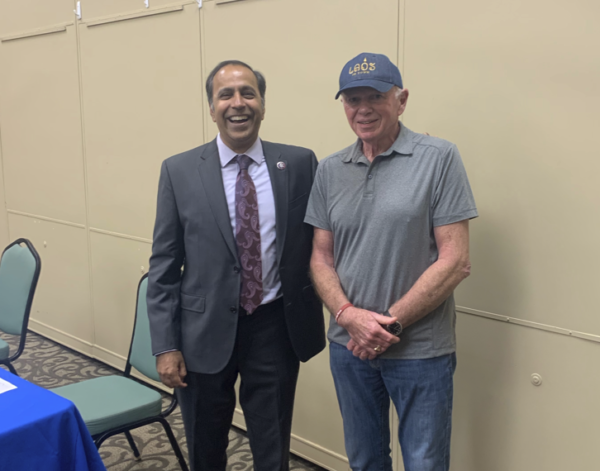


Rep. Raja Krishnamoorthi (D-IL) and NCPSSM President Max Ricthman
Congressman Krishnamoorthi receives a 100% rating on the National Committee’s legislative scorecard, reflecting his votes on crucial issues affecting seniors. He told town hall attendees that both of his parents receive Social Security and Medicare benefits and were “happy” that he had received a perfect score from the National Committee, adding, “If my parents are happy, I’m happy.”
NCPSSM President and House Members Team-Up to Tout New Prescription Drug Pricing Measures
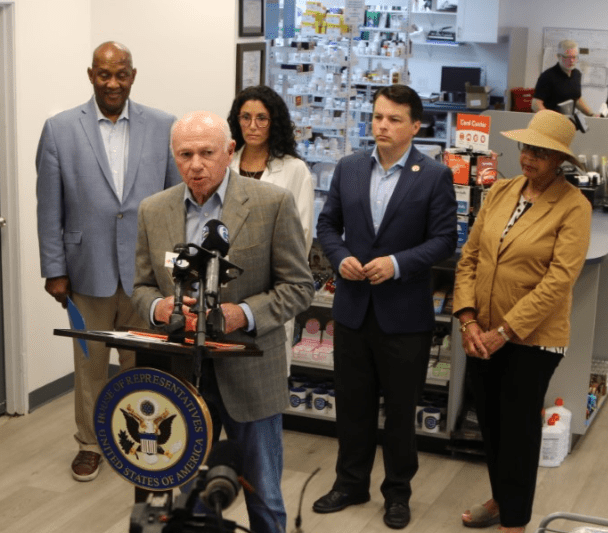


NCPSSM President and CEO Max Richtman joined two Pennsylvania congressmen in announcing that seniors will benefit from the just-enacted Inflation Reduction Act. Richtman appeared last week at Circle Pharmacy in Philadelphia with representatives Brendan Boyle (D-PA) and Dwight Evans (D-PA), two seniors champions who voted for the new legislation that includes significant measures to lower prescription drug prices. The event was covered by NBC 10, WCAU-TV in Philadelphia.
The Inflation Reduction Act allows Medicare to negotiate drug prices with Big Pharma, a measure that is expected to save the program $288 billion over ten years – and lead to savings at the pharmacy counter for tens of millions of seniors and, eventually, all Americans. Negotiations will begin for ten of the highest cost drugs in Medicare. Negotiated prices will take effect beginning in 2026.
Speaking in front of the Circle Pharmacy counter, Richtman said:
“We would have liked to have more drugs covered, sooner, but the good thing is in this legislation, the drugs that are subject to negotiation are the costliest, so at least we’re going to get at the heart of the problem.” – Max Richtman, NCPSSM President and CEO, 8/18/22
Congressman Boyle, a member of the House Ways and Means Social Security subcommittee, called the Inflation Reduction Act “one of the most significant pieces of legislation that I will have had the opportunity to vote on.” Rep. Evans, a member of the House Ways and Means Health subcommittee said, “This law makes a difference for hundreds of thousands of Pennsylvanians.”
Gwendolyn O’Neal, who co-owns the independent Circle Pharmacy, encounters seniors who cannot afford their prescription medications on a regular basis. “It’s hard. We want them to have the medicine they need to live,” she said.
“(The current prescription drug pricing system) makes it difficult for people. They sometimes have to choose between medicine and groceries or paying the rent. Often, their copays are very high and they get frustrated because they have to make that choice.” – Gwendolyn O’Neal, co-owner, Circle Pharmacy, Philadelphia, PA, 8/18/22
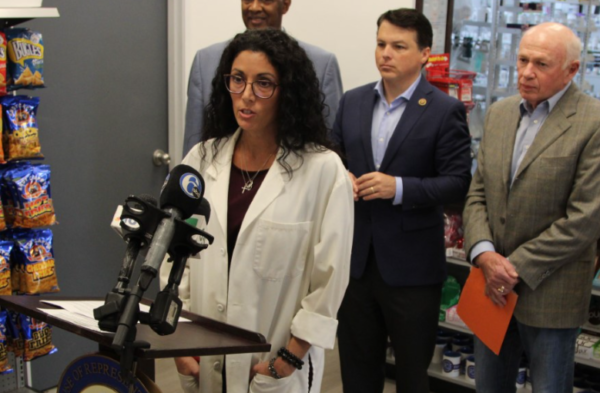


The new law also includes two other landmark reforms: a $2,000 annual out-of-pocket limit on drug costs for patients in Medicare Part D — and a $35 monthly cap on insulin costs for beneficiaries. President Biden signed the Inflation Reduction Act into law on August 16th, calling it a “godsend” for American families.
On August 19th, Max Richtman sent a congratulatory letter to President Biden for keeping his campaign promise to take action to lower prescription drug prices.
“The National Committee thanks you for your persistent efforts that led to the enactment of this landmark law. We look forward to working with you and your administration to advance legislation that will make further improvements in health care coverage, affordability and access for all Americans.” – Max Richtman letter to President Biden, 8/19/22
Richtman encourages other members of Congress who supported the new law to hold similar events to get the word out in advance of November’s mid-term elections, when advocates hope seniors will vote for the party that is demonstrably working to alleviate the pain of high health care costs.
House Passes Historic Prescription Drug Pricing Legislation



The U.S. House today passed historic legislation to bring down prescription drug prices for tens of millions of American seniors. The Inflation Reduction Act, which the Senate passed last weekend after intense negotiations between Senate Majority Leader Chuck Schumer and West Virginia Senator Joe Manchin, now goes to President Biden’s desk for signature. It is the most sweeping health care legislation since the enactment of the Affordable Care Act in 2010. Seniors’ advocates cheered the House vote after decades of battling to bring soaring prescription drug prices under control, especially for seniors in the Medicare Part D program:
“Today’s House passage of The Inflation Reduction Act will deliver meaningful price relief to Medicare beneficiaries who have been struggling to afford their essential medications while Big Pharma’s profits soared. Seniors and their advocates have been battling skyrocketing prescription drug prices for decades — while the drug industry lobby has spent billions of dollars to defeat any attempt at reducing consumer costs. Commonsense legislation to contain runaway drug prices may be a bitter pill for Big Pharma, but it’s one Congress says the industry will have to swallow.” – Max Richtman, President and CEO, National Committee to Preserve Social Security and Medicare, 8/12/22
Under this bill, Medicare will finally be empowered to negotiate prices for certain high-cost medications with drug-makers, similar to what the VA health care system has been doing for years. The bill reverses an insidious provision in the 2003 Medicare Modernization Act forbidding the Medicare program from negotiating prices with manufacturers. When prices are negotiated, the exorbitant costs of life-saving medications for conditions like heart disease and cancer should finally come down, providing much-needed relief to seniors’ pocketbooks — and saving Medicare $288 billion over ten years.
The bill also makes drugs more affordable by capping Medicare Part D patients’ out of pocket costs at $2,000 per year. This will be of enormous help to beneficiaries on fixed incomes who have been rationing or skipping medications altogether because of cost, sometime with fatal consequences. Likewise, for millions of Medicare beneficiaries living with diabetes, the bill caps the cost of insulin at $35 per month at a time when retail prices can range from $300-$1,000.
Thanks to the Inflation Reduction Act, drug-makers no longer will able to hike prescription prices at will with impunity. Among other provisions, the legislation requires drug companies to rebate to the government the amount by which drugs used under Medicare Part B and D rise faster than inflation.
“On behalf of our millions of members and supporters across the country, we commend the House majority who voted to pass this bill in the face of formidable pressure from Big Pharma — and we congratulate President Biden for his leadership to deliver on his pledge to lower drug prices. This is a historic win for all Americans.” – Max Richtman
Prescription Drug Price Reform of Historic Proportions
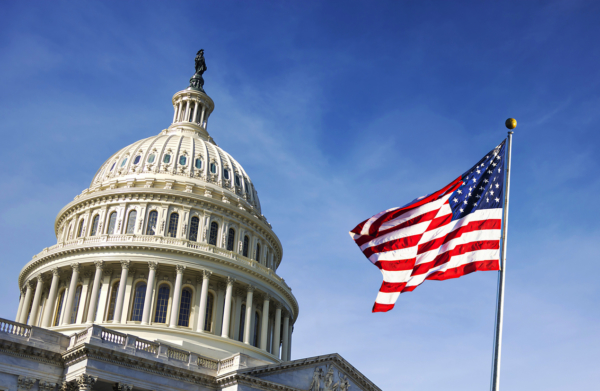


Those who refer to the Inflation Reduction Act passed by the Senate this past weekend as “historic” are not exaggerating. The Act represents the most muscular legislation to date to try to tame rising prescription drug prices, which can be devastating for seniors. The legislation still must be passed by the House and signed into law by President Biden, but it is unlikely to materially change. Among other measures, the Inflation Reduction Act:
*Empowers Medicare to negotiate prices with drug-makers
*Caps Medicare Part D patients’ annual out-of-pocket payments at $2,000
*Caps the cost of insulin for Part D patients at $35/month
*Penalizes drug-makers for raising prices above the rate of inflation
Though the bill does not contain everything that advocates (and many Progressives) had hoped, these provisions represent meaningful reform that can change lives for the better by taming drug prices. Its most historic aspect is the drug price negotiation provision – more modest than originally envisioned, but still extremely significant. At first, only ten drugs will be eligible for negotiations, and new brand-name drugs are excluded. Negotiated prices will not take effect until 2026. But Big Pharma opposed even these modest measures, unleashing its multi-billion dollar campaign contribution and lobbying machine against the Democrats’ plans.
Prescription drug price negotiation by the Medicare program was explicitly forbidden by the Medicare Modernization Act of 2003 – the law that created Part D drug coverage. It took advocates almost two decades to reverse that provision, even though the VA system has been successfully negotiating prices with Big Pharma for years.
“This is like lifting a curse,” Senator Ron Wyden, Democrat of Oregon and the architect of the measure, said of the Medicare negotiation provision. “Big Pharma has been protecting the ban on negotiation like it was the Holy Grail.” – New York Times, 8/05/22
NCPSSM President and CEO Max Richtman (who was Executive Vice President of the organization back in 2003) remembers when the ban against price negotiation was dropped into the Medicare Modernization Act.
“The provision literally was inserted in the middle of the night, after Big Pharma reached a deal with congressional Republicans. The industry essentially said, ‘We can live with the new Part D drug benefit, but not with prescription drug price negotiation.’ We in the advocacy community have been trying to undo that ever since.” – Max Richtman, NCPSSM President and CEO
Richtman says that the chair of the House Energy and Commerce Committee, Rep. Billy Tauzin (R-LA), was the prime mover of the negotiation ban in Congress. “He carried the water for Big Pharma,” Richtman remembers. Tauzin retired from Congress in January, 2005. The day after his term ended, he took over as head of PhRMA, the drug industry’s powerful lobbying group.
Up until now, Big Pharma’s outsize influence on Capitol Hill was able to keep efforts toward prescription drug pricing reform at bay. According to the New York Times, the industry has spent more than $5.2 billion on lobbying since 1998. “The insurance industry, the next biggest spender, spent $3.3 billion,” reports the Times, which says that Big Pharma splits its lavish campaign contributions roughly equally between Republicans and Democrats.
So what changed? How is Congress finally able to move prescription drug pricing reform across the finish line? For one thing, the average price of brand name prescription drugs in Medicare Part D more than doubled between 2009 and 2018, outraging the public and advocates alike. During the subsequent two years, price hikes outstripped inflation for half of all drugs covered by Medicare. Because seniors’ incomes have not increased anywhere near that much since 2009, older Americans have been especially squeezed by the cost of their essential medications – causing many to ration prescription drugs or skip them altogether.
Secondly, advocacy organizations like NCPSSM intensified their efforts to call attention to soaring drug prices and demand congressional action. In 2019, the National Committee launched a campaign, Don’t Cut Pills, Cut Profits, emphasizing public education and outreach (including town halls with members of Congress) to move the needle on this issue. Seniors’ groups continued to press for drug price reform in the ensuing three years.
Reform efforts gained steam after the 2018 midterm elections, when Democrats re-took control of the U.S. House. In 2019, the House passed the Elijah Cummings Lower Drug Costs Now Act (H.R. 3), which included prescription drug price negotiation and other provisions to knock down prices. With Republicans still in control of the Senate and Donald Trump in the White House, that legislation stalled. (President Trump had promised to lower drug prices but favored weak executive actions over meaningful legislation.)
The election of President Joe Biden – and the Democrats’ seizing control of the Senate in 2020 – proved to be pivotal in the campaign for prescription drug price reform. President Biden came to office pledging to lower drug prices… and meant it. His Build Back Better (BBB) plan, enacted by the House in 2021, contained many of the same provisions that Senate approved last weekend. Sen. Joe Manchin (D-WV), who effectively blocked the Build Back Better plan in the Senate, finally reached a deal with Democratic Leader Chuck Schumer (D-NY) this summer, acceding to drug price negotiation and other reforms as part of the new Inflation Reduction Act.
In other words, after decades of advocacy, the stars finally aligned for prescription drug price reform. HHS Secretary Xavier Becerra, who fought for reform when he was a member of Congress, summed up the driving principle behind the new legislation. “No one should have to go without health care or a prescription they need because they can’t afford it,” he said upon Senate passage of the bill.
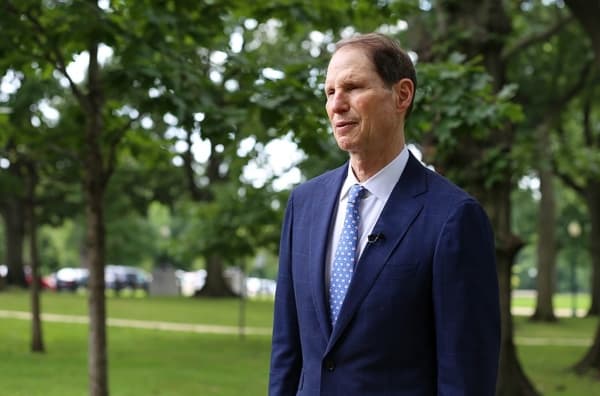


“This is like lifting a curse,” says Sen. Ron Wyden of the Medicare price negotiation provision
Of course, that hasn’t stopped Republicans from decrying the legislation, claiming that it will stifle innovation in the pharmaceutical sector. None other than Senator Rick Scott (R-FL), who as chair of the National Republican Senatorial Campaign Committee proposed to ‘sunset’ federal laws like Social Security and Medicare after five years, was on CBS Face the Nation last Sunday trashing the bill. Scott called the legislation “a war on Medicare” and claimed that the projected $288 billion in savings from drug price negotiation amounted to a cut that would harm seniors. (The savings actually will be used to extend Affordable Care Act premium subsidies for working and middle-class Americans.)\
NCPSSM director of government relations and policy Dan Adcock calls Scott’s remarks “disingenuous.” “Medicare beneficiaries will not see a dime cut from their benefits,” says Adcock. As for the claims that price negotiation will affect innovation, Adcock points out that Big Pharma receives generous government subsidies for research and development, along with huge tax breaks. “Drug industry profit margins are 15-19%. Most Fortune 500 companies are lucky to get 9%,” says Adcock. “Big Pharma spends much more on marketing and advertising than they do on R&D.”
Indeed, the industry continues to run dishonest television ads opposing the Inflation Reduction Act, painting Democrats as endangering Medicare (by lowering their drug prices!). This time, it probably won’t work. Democrats are sticking to their guns. Not a single Republican will vote for it, but the bill will likely pass the House at the end of this week and move to the President’s desk for his signature. History will be made, despite the industry’s fierce efforts to thwart reform. As Max Richtman puts it, “This is a huge win that will put money back in the pockets of American seniors.”
Ron Johnson’s Plan is Part of GOP Assault on Seniors’ Earned Benefits
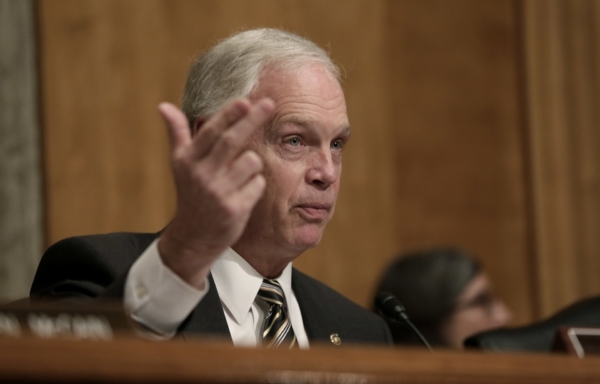


Wikimedia Commons
Social Security and Medicare defenders often say that the public doesn’t understand the threat that Republicans pose to these programs. Indeed, many Republicans proclaim support for both while pushing proposals to undermine them. But lately it seems as if Republicans are going out of their way to lay bare their intentions – or, as some put it, “to say the quiet part out loud.”
Earlier this week, Senator Ron Johnson (R-WI) said during an interview that Social Security and Medicare should no longer be mandatory spending programs. Instead, he said, they should be considered “discretionary spending” and subject to routine budget negotiations every year. This, of course, violates the basic principles of social insurance, where workers pay into the system now in order to collect guaranteed benefits later. Leaving those benefits to the “discretion” of Congress every fiscal year would break the fundamental promise of Social Security and Medicare.
It’s little wonder, then, that Sen. Johnson’s proposal attracted a lot of media attention – and probably not the kind that he wanted. Here are just a few of the headlines:
Ron Johnson aims to put Social Security on the chopping block, White House says. (Truthout)
Lt. Governor Slams ‘Self-Serving, Multimillionaire’ Ron Johnson for Attack on Social Security, Medicare (Salon)
Chris Wallace calls Ron Johnson’s Social Security, Medicare idea ‘suicidal politics’ (The Hill)
Sen. Johnson suggests ending Medicare, Social Security as mandatory spending programs (Washington Post)
As these two landmark social insurance programs mark their anniversaries this summer (Medicare on July 30th and Social Security on August 14th), Republicans are piling up proposals that could weaken or outright end them. Sen. Johnson’s is merely the latest in a series of really bad ideas. (See Sen. Rick Scott’s proposal to sunset Social Security and Medicare after five years — or Sen. Mitt Romney’s TRUST Act, for starters.) This is not a surprise, as most Republicans opposed Social Security and Medicare when they were enacted in 1935 and 1965, respectively – and have been hoping to undo or privatize both programs for decades.
Sen. Johnson surely is no friend to Social Security and Medicare, having called the former “a Ponzi scheme” just last year. His Democratic opponent in the fall mid-terms, Wisconsin Lt. Governor Mandela Barnes, wasted no time calling Johnson out for his latest proposal:
“Barnes slammed Sen. Ron Johnson as a ‘self-serving, multimillionaire’ after the sitting Republican from Wisconsin called for making both Social Security and Medicare discretionary programs—a reform that would pave the way for the GOP to realize its half-century-long dream of dismantling two of the nation’s most essential and popular social programs.”
The White House, too, was quick to respond to Sen. Johnson, tweeting:
“Congressional Republicans like Senator Ron Johnson want to put Social Security and Medicare on the chopping block…That would devastate families.” – White House tweet, 8/2/22
None other than former FOX News anchor Chris Wallace excoriated Johnson during an interview on CNN:
“Social Security is not money that is just handed out to Americans. ‘Hey, here’s some free money.’ We pay into Social Security. We pay into Medicare. It’s, in effect, an insurance policy. Nobody would say, ‘You’re not entitled to the benefit for a life insurance when the person who has the policy dies.’ We have been paying into the system for years.”
Wallace called Johnson’s plan “suicidal politics.” That seems like a fair characterization given that Social Security and Medicare are incredibly popular. In poll after poll, overwhelming majorities say they want to see both programs protected and expanded, not cut and privatized.
“Both programs were first introduced in order to provide a crucial social safety net for seniors, disabled people and other vulnerable populations; Social Security… has allowed millions of people to retire and avoid poverty. Medicare has saved countless lives, and experts say that cutting it would be disastrous.” – Truthout, 8/3/22
By continuing to push proposals that undermine the very nature of Social Security and Medicare, Republicans are gambling that the public will be fooled or simply not care. Heading into this fall’s mid-term elections, all workers and retirees should make sure they know not just what their candidates say about these programs, but what they actually propose to do. Republicans – who hope to retake both houses of Congress in November – are making their destructive agenda increasingly apparent to anyone who is listening.
Now Is Not the Time to Turn Our Backs on Seniors



“Now is not the time to turn our backs on seniors by cutting Social Security and Medicare!” declared Congressman Raja Krishnamoorthi (D-IL), kicking off a town hall in his home district with National Committee President and CEO Max Richtman on August 29th. Held in Des Plaines, Illinois before an audience of constituents, the event was entitled, “Keeping Our Promises to Seniors.”
During the hour-long town hall, Richtman and Rep. Krishnamoorthi pledged to continue working together to expand and strengthen Social Security and Medicare — and fight any attempts to cut or privatize them. “We have to protect Social Security and Medicare. That’s our promise… and in America, we keep our promises,” said the Congressman.
Richtman and Krishnamoorthi lauded the Democrats’ recently enacted Inflation Reduction Act, which empowers Medicare to negotiate prescription drug prices and caps beneficiaries’ out-of-pocket costs for medications, among other measures to alleviate seniors’ costs at the pharmacy counter.
“Medicare is going to be able to negotiate the prices of some of the most expensive drugs. And the $2,000 yearly cap in Medicare Part D is going to help a lot of seniors who have been spending a fortune on very costly treatments. We worked on this for a long time and finally got it through the Congress.” – Max Richtman at Rep. Krishnamoorthi’s town hall, 8/29/22
Richtman praised Rep. Krishnamoorthi for “taking on Big Pharma” and contributing to this landmark legislation as a member of the House Committee on Oversight and Reform. “This new law may be a bitter pill for the drug industry. But it will provide relief to millions of seniors,” Richtman said.
Prescription drugs were not the only things on constituents’ minds at the town hall. Participants asked questions about the controversial Medicare Advantage (MA) program — the privately-run alternative to traditional Medicare. MA plans, which are run by big insurance companies, are undergoing increased (some would say, overdue) scrutiny for questionable practices, including overbilling the Medicare program and denying reasonable care to patients.
“The HHS Inspector General’s report that showed that many MA beneficiaries were denied coverage even though it should have been approved under Medicare rules. Why? Because MA is a business. Insurance companies want to make money. Their priority is profit. If they can make more money by denying services, they’ll do that.” – Max Richtman, 8/29/22
Richtman told the town hall audience that Senator Ron Wyden, Chairman of the Senate Finance Committee, has launched an inquiry into questionable Medicare Advantage practices. Sen. Wyden recently sent letters to 15 state insurance commissioners and state health insurance assistance programs requesting data related to “deceptive marketing practices.” The Centers for Medicare and Medicaid Services (CMS) says it received more than twice the number of complaints from seniors regarding Medicare Advantage plans in 2021 than it did in 2020.
“I have heard alarming reports that MA health plans… and their contractors are engaging in aggressive sales practices that take advantage of vulnerable seniors and people with disabilities.” – Senator Ron Wyden’s letter to MA insurers and state insurance commissioners
Medicare Advantage plans spend millions of dollars on sometimes misleading television ads featuring celebrities like Joe Namath and Jimmy Walker. “Joe Namath was a great quarterback,” said Richtman, “But I’m tired of watching him and other famous people pitching Medicare Advantage when the ads don’t tell the whole story.”
Richtman and Rep. Krishnamoorthi also addressed Democratic efforts to expand and strengthen Social Security. Richtman cited Rep. John Larson’s Social Security 2100: A Sacred Trust bill, which would “bring in more revenue, extend solvency, and improve benefits… by changing the cap on wages subject to payroll taxes so the wealthy pay their fair share.” The National Committee has endorsed the Social Security 2100 legislation and Congressman Krishnamoorthi is one of the bill’s cosponsors in the U.S. House. (The bill is awaiting a vote in committee and on the House floor.)



Rep. Raja Krishnamoorthi (D-IL) and NCPSSM President Max Ricthman
Congressman Krishnamoorthi receives a 100% rating on the National Committee’s legislative scorecard, reflecting his votes on crucial issues affecting seniors. He told town hall attendees that both of his parents receive Social Security and Medicare benefits and were “happy” that he had received a perfect score from the National Committee, adding, “If my parents are happy, I’m happy.”
NCPSSM President and House Members Team-Up to Tout New Prescription Drug Pricing Measures



NCPSSM President and CEO Max Richtman joined two Pennsylvania congressmen in announcing that seniors will benefit from the just-enacted Inflation Reduction Act. Richtman appeared last week at Circle Pharmacy in Philadelphia with representatives Brendan Boyle (D-PA) and Dwight Evans (D-PA), two seniors champions who voted for the new legislation that includes significant measures to lower prescription drug prices. The event was covered by NBC 10, WCAU-TV in Philadelphia.
The Inflation Reduction Act allows Medicare to negotiate drug prices with Big Pharma, a measure that is expected to save the program $288 billion over ten years – and lead to savings at the pharmacy counter for tens of millions of seniors and, eventually, all Americans. Negotiations will begin for ten of the highest cost drugs in Medicare. Negotiated prices will take effect beginning in 2026.
Speaking in front of the Circle Pharmacy counter, Richtman said:
“We would have liked to have more drugs covered, sooner, but the good thing is in this legislation, the drugs that are subject to negotiation are the costliest, so at least we’re going to get at the heart of the problem.” – Max Richtman, NCPSSM President and CEO, 8/18/22
Congressman Boyle, a member of the House Ways and Means Social Security subcommittee, called the Inflation Reduction Act “one of the most significant pieces of legislation that I will have had the opportunity to vote on.” Rep. Evans, a member of the House Ways and Means Health subcommittee said, “This law makes a difference for hundreds of thousands of Pennsylvanians.”
Gwendolyn O’Neal, who co-owns the independent Circle Pharmacy, encounters seniors who cannot afford their prescription medications on a regular basis. “It’s hard. We want them to have the medicine they need to live,” she said.
“(The current prescription drug pricing system) makes it difficult for people. They sometimes have to choose between medicine and groceries or paying the rent. Often, their copays are very high and they get frustrated because they have to make that choice.” – Gwendolyn O’Neal, co-owner, Circle Pharmacy, Philadelphia, PA, 8/18/22



The new law also includes two other landmark reforms: a $2,000 annual out-of-pocket limit on drug costs for patients in Medicare Part D — and a $35 monthly cap on insulin costs for beneficiaries. President Biden signed the Inflation Reduction Act into law on August 16th, calling it a “godsend” for American families.
On August 19th, Max Richtman sent a congratulatory letter to President Biden for keeping his campaign promise to take action to lower prescription drug prices.
“The National Committee thanks you for your persistent efforts that led to the enactment of this landmark law. We look forward to working with you and your administration to advance legislation that will make further improvements in health care coverage, affordability and access for all Americans.” – Max Richtman letter to President Biden, 8/19/22
Richtman encourages other members of Congress who supported the new law to hold similar events to get the word out in advance of November’s mid-term elections, when advocates hope seniors will vote for the party that is demonstrably working to alleviate the pain of high health care costs.
House Passes Historic Prescription Drug Pricing Legislation



The U.S. House today passed historic legislation to bring down prescription drug prices for tens of millions of American seniors. The Inflation Reduction Act, which the Senate passed last weekend after intense negotiations between Senate Majority Leader Chuck Schumer and West Virginia Senator Joe Manchin, now goes to President Biden’s desk for signature. It is the most sweeping health care legislation since the enactment of the Affordable Care Act in 2010. Seniors’ advocates cheered the House vote after decades of battling to bring soaring prescription drug prices under control, especially for seniors in the Medicare Part D program:
“Today’s House passage of The Inflation Reduction Act will deliver meaningful price relief to Medicare beneficiaries who have been struggling to afford their essential medications while Big Pharma’s profits soared. Seniors and their advocates have been battling skyrocketing prescription drug prices for decades — while the drug industry lobby has spent billions of dollars to defeat any attempt at reducing consumer costs. Commonsense legislation to contain runaway drug prices may be a bitter pill for Big Pharma, but it’s one Congress says the industry will have to swallow.” – Max Richtman, President and CEO, National Committee to Preserve Social Security and Medicare, 8/12/22
Under this bill, Medicare will finally be empowered to negotiate prices for certain high-cost medications with drug-makers, similar to what the VA health care system has been doing for years. The bill reverses an insidious provision in the 2003 Medicare Modernization Act forbidding the Medicare program from negotiating prices with manufacturers. When prices are negotiated, the exorbitant costs of life-saving medications for conditions like heart disease and cancer should finally come down, providing much-needed relief to seniors’ pocketbooks — and saving Medicare $288 billion over ten years.
The bill also makes drugs more affordable by capping Medicare Part D patients’ out of pocket costs at $2,000 per year. This will be of enormous help to beneficiaries on fixed incomes who have been rationing or skipping medications altogether because of cost, sometime with fatal consequences. Likewise, for millions of Medicare beneficiaries living with diabetes, the bill caps the cost of insulin at $35 per month at a time when retail prices can range from $300-$1,000.
Thanks to the Inflation Reduction Act, drug-makers no longer will able to hike prescription prices at will with impunity. Among other provisions, the legislation requires drug companies to rebate to the government the amount by which drugs used under Medicare Part B and D rise faster than inflation.
“On behalf of our millions of members and supporters across the country, we commend the House majority who voted to pass this bill in the face of formidable pressure from Big Pharma — and we congratulate President Biden for his leadership to deliver on his pledge to lower drug prices. This is a historic win for all Americans.” – Max Richtman
Prescription Drug Price Reform of Historic Proportions



Those who refer to the Inflation Reduction Act passed by the Senate this past weekend as “historic” are not exaggerating. The Act represents the most muscular legislation to date to try to tame rising prescription drug prices, which can be devastating for seniors. The legislation still must be passed by the House and signed into law by President Biden, but it is unlikely to materially change. Among other measures, the Inflation Reduction Act:
*Empowers Medicare to negotiate prices with drug-makers
*Caps Medicare Part D patients’ annual out-of-pocket payments at $2,000
*Caps the cost of insulin for Part D patients at $35/month
*Penalizes drug-makers for raising prices above the rate of inflation
Though the bill does not contain everything that advocates (and many Progressives) had hoped, these provisions represent meaningful reform that can change lives for the better by taming drug prices. Its most historic aspect is the drug price negotiation provision – more modest than originally envisioned, but still extremely significant. At first, only ten drugs will be eligible for negotiations, and new brand-name drugs are excluded. Negotiated prices will not take effect until 2026. But Big Pharma opposed even these modest measures, unleashing its multi-billion dollar campaign contribution and lobbying machine against the Democrats’ plans.
Prescription drug price negotiation by the Medicare program was explicitly forbidden by the Medicare Modernization Act of 2003 – the law that created Part D drug coverage. It took advocates almost two decades to reverse that provision, even though the VA system has been successfully negotiating prices with Big Pharma for years.
“This is like lifting a curse,” Senator Ron Wyden, Democrat of Oregon and the architect of the measure, said of the Medicare negotiation provision. “Big Pharma has been protecting the ban on negotiation like it was the Holy Grail.” – New York Times, 8/05/22
NCPSSM President and CEO Max Richtman (who was Executive Vice President of the organization back in 2003) remembers when the ban against price negotiation was dropped into the Medicare Modernization Act.
“The provision literally was inserted in the middle of the night, after Big Pharma reached a deal with congressional Republicans. The industry essentially said, ‘We can live with the new Part D drug benefit, but not with prescription drug price negotiation.’ We in the advocacy community have been trying to undo that ever since.” – Max Richtman, NCPSSM President and CEO
Richtman says that the chair of the House Energy and Commerce Committee, Rep. Billy Tauzin (R-LA), was the prime mover of the negotiation ban in Congress. “He carried the water for Big Pharma,” Richtman remembers. Tauzin retired from Congress in January, 2005. The day after his term ended, he took over as head of PhRMA, the drug industry’s powerful lobbying group.
Up until now, Big Pharma’s outsize influence on Capitol Hill was able to keep efforts toward prescription drug pricing reform at bay. According to the New York Times, the industry has spent more than $5.2 billion on lobbying since 1998. “The insurance industry, the next biggest spender, spent $3.3 billion,” reports the Times, which says that Big Pharma splits its lavish campaign contributions roughly equally between Republicans and Democrats.
So what changed? How is Congress finally able to move prescription drug pricing reform across the finish line? For one thing, the average price of brand name prescription drugs in Medicare Part D more than doubled between 2009 and 2018, outraging the public and advocates alike. During the subsequent two years, price hikes outstripped inflation for half of all drugs covered by Medicare. Because seniors’ incomes have not increased anywhere near that much since 2009, older Americans have been especially squeezed by the cost of their essential medications – causing many to ration prescription drugs or skip them altogether.
Secondly, advocacy organizations like NCPSSM intensified their efforts to call attention to soaring drug prices and demand congressional action. In 2019, the National Committee launched a campaign, Don’t Cut Pills, Cut Profits, emphasizing public education and outreach (including town halls with members of Congress) to move the needle on this issue. Seniors’ groups continued to press for drug price reform in the ensuing three years.
Reform efforts gained steam after the 2018 midterm elections, when Democrats re-took control of the U.S. House. In 2019, the House passed the Elijah Cummings Lower Drug Costs Now Act (H.R. 3), which included prescription drug price negotiation and other provisions to knock down prices. With Republicans still in control of the Senate and Donald Trump in the White House, that legislation stalled. (President Trump had promised to lower drug prices but favored weak executive actions over meaningful legislation.)
The election of President Joe Biden – and the Democrats’ seizing control of the Senate in 2020 – proved to be pivotal in the campaign for prescription drug price reform. President Biden came to office pledging to lower drug prices… and meant it. His Build Back Better (BBB) plan, enacted by the House in 2021, contained many of the same provisions that Senate approved last weekend. Sen. Joe Manchin (D-WV), who effectively blocked the Build Back Better plan in the Senate, finally reached a deal with Democratic Leader Chuck Schumer (D-NY) this summer, acceding to drug price negotiation and other reforms as part of the new Inflation Reduction Act.
In other words, after decades of advocacy, the stars finally aligned for prescription drug price reform. HHS Secretary Xavier Becerra, who fought for reform when he was a member of Congress, summed up the driving principle behind the new legislation. “No one should have to go without health care or a prescription they need because they can’t afford it,” he said upon Senate passage of the bill.



“This is like lifting a curse,” says Sen. Ron Wyden of the Medicare price negotiation provision
Of course, that hasn’t stopped Republicans from decrying the legislation, claiming that it will stifle innovation in the pharmaceutical sector. None other than Senator Rick Scott (R-FL), who as chair of the National Republican Senatorial Campaign Committee proposed to ‘sunset’ federal laws like Social Security and Medicare after five years, was on CBS Face the Nation last Sunday trashing the bill. Scott called the legislation “a war on Medicare” and claimed that the projected $288 billion in savings from drug price negotiation amounted to a cut that would harm seniors. (The savings actually will be used to extend Affordable Care Act premium subsidies for working and middle-class Americans.)\
NCPSSM director of government relations and policy Dan Adcock calls Scott’s remarks “disingenuous.” “Medicare beneficiaries will not see a dime cut from their benefits,” says Adcock. As for the claims that price negotiation will affect innovation, Adcock points out that Big Pharma receives generous government subsidies for research and development, along with huge tax breaks. “Drug industry profit margins are 15-19%. Most Fortune 500 companies are lucky to get 9%,” says Adcock. “Big Pharma spends much more on marketing and advertising than they do on R&D.”
Indeed, the industry continues to run dishonest television ads opposing the Inflation Reduction Act, painting Democrats as endangering Medicare (by lowering their drug prices!). This time, it probably won’t work. Democrats are sticking to their guns. Not a single Republican will vote for it, but the bill will likely pass the House at the end of this week and move to the President’s desk for his signature. History will be made, despite the industry’s fierce efforts to thwart reform. As Max Richtman puts it, “This is a huge win that will put money back in the pockets of American seniors.”
Ron Johnson’s Plan is Part of GOP Assault on Seniors’ Earned Benefits



Wikimedia Commons
Social Security and Medicare defenders often say that the public doesn’t understand the threat that Republicans pose to these programs. Indeed, many Republicans proclaim support for both while pushing proposals to undermine them. But lately it seems as if Republicans are going out of their way to lay bare their intentions – or, as some put it, “to say the quiet part out loud.”
Earlier this week, Senator Ron Johnson (R-WI) said during an interview that Social Security and Medicare should no longer be mandatory spending programs. Instead, he said, they should be considered “discretionary spending” and subject to routine budget negotiations every year. This, of course, violates the basic principles of social insurance, where workers pay into the system now in order to collect guaranteed benefits later. Leaving those benefits to the “discretion” of Congress every fiscal year would break the fundamental promise of Social Security and Medicare.
It’s little wonder, then, that Sen. Johnson’s proposal attracted a lot of media attention – and probably not the kind that he wanted. Here are just a few of the headlines:
Ron Johnson aims to put Social Security on the chopping block, White House says. (Truthout)
Lt. Governor Slams ‘Self-Serving, Multimillionaire’ Ron Johnson for Attack on Social Security, Medicare (Salon)
Chris Wallace calls Ron Johnson’s Social Security, Medicare idea ‘suicidal politics’ (The Hill)
Sen. Johnson suggests ending Medicare, Social Security as mandatory spending programs (Washington Post)
As these two landmark social insurance programs mark their anniversaries this summer (Medicare on July 30th and Social Security on August 14th), Republicans are piling up proposals that could weaken or outright end them. Sen. Johnson’s is merely the latest in a series of really bad ideas. (See Sen. Rick Scott’s proposal to sunset Social Security and Medicare after five years — or Sen. Mitt Romney’s TRUST Act, for starters.) This is not a surprise, as most Republicans opposed Social Security and Medicare when they were enacted in 1935 and 1965, respectively – and have been hoping to undo or privatize both programs for decades.
Sen. Johnson surely is no friend to Social Security and Medicare, having called the former “a Ponzi scheme” just last year. His Democratic opponent in the fall mid-terms, Wisconsin Lt. Governor Mandela Barnes, wasted no time calling Johnson out for his latest proposal:
“Barnes slammed Sen. Ron Johnson as a ‘self-serving, multimillionaire’ after the sitting Republican from Wisconsin called for making both Social Security and Medicare discretionary programs—a reform that would pave the way for the GOP to realize its half-century-long dream of dismantling two of the nation’s most essential and popular social programs.”
The White House, too, was quick to respond to Sen. Johnson, tweeting:
“Congressional Republicans like Senator Ron Johnson want to put Social Security and Medicare on the chopping block…That would devastate families.” – White House tweet, 8/2/22
None other than former FOX News anchor Chris Wallace excoriated Johnson during an interview on CNN:
“Social Security is not money that is just handed out to Americans. ‘Hey, here’s some free money.’ We pay into Social Security. We pay into Medicare. It’s, in effect, an insurance policy. Nobody would say, ‘You’re not entitled to the benefit for a life insurance when the person who has the policy dies.’ We have been paying into the system for years.”
Wallace called Johnson’s plan “suicidal politics.” That seems like a fair characterization given that Social Security and Medicare are incredibly popular. In poll after poll, overwhelming majorities say they want to see both programs protected and expanded, not cut and privatized.
“Both programs were first introduced in order to provide a crucial social safety net for seniors, disabled people and other vulnerable populations; Social Security… has allowed millions of people to retire and avoid poverty. Medicare has saved countless lives, and experts say that cutting it would be disastrous.” – Truthout, 8/3/22
By continuing to push proposals that undermine the very nature of Social Security and Medicare, Republicans are gambling that the public will be fooled or simply not care. Heading into this fall’s mid-term elections, all workers and retirees should make sure they know not just what their candidates say about these programs, but what they actually propose to do. Republicans – who hope to retake both houses of Congress in November – are making their destructive agenda increasingly apparent to anyone who is listening.


